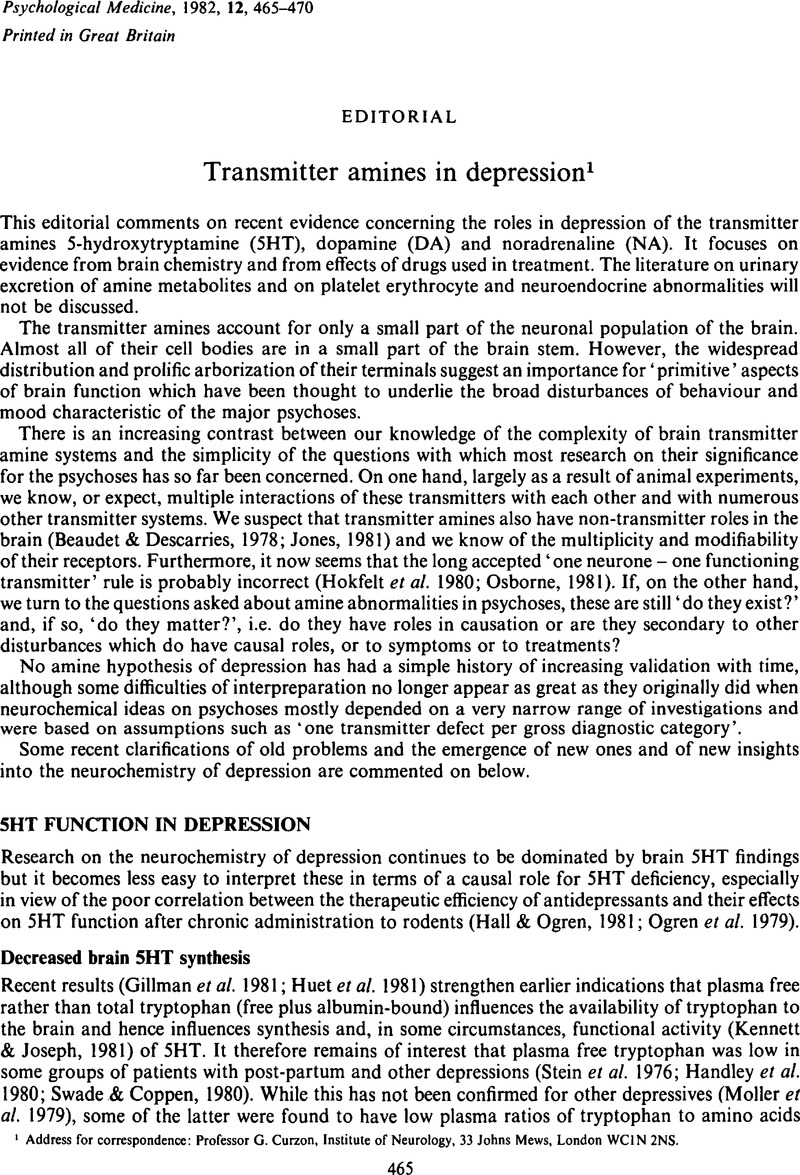Crossref Citations
This article has been cited by the following publications. This list is generated based on data provided by Crossref.
Ohnmacht, C.J.
Malick, J.B.
and
Frazee, W.J.
1983.
Vol. 18,
Issue. ,
p.
41.
Yang, Ren-Keui
Edasery, James P.
and
Davis, Kenneth L.
1983.
A Simple Assay of 3-Methoxy-4-hydroxyphenylethyleneglycol in Cerebrospinal Fluid by High Performance Liquid Chromatography.
Journal of Liquid Chromatography,
Vol. 6,
Issue. 11,
p.
1997.
Dennerstein, Lorraine
Spencer-Gardner, Christine
and
Burrows, Graham D.
1984.
Psychiatric progress.
Journal of Psychiatric Research,
Vol. 18,
Issue. 1,
p.
1.
Cowen, P. J.
Braddock, L. E.
and
Gosden, B.
1984.
The effect of amitriptyline treatment on the growth hormone response to apomorphine.
Psychopharmacology,
Vol. 83,
Issue. 4,
p.
378.
Kennett, Guy A.
Dickinson, Stephen L.
and
Curzon, Gerald
1985.
Central serotonergic responses and behavioural adaptation to repeated immobilisation: The effect of the corticosterone synthesis inhibitor metyrapone.
European Journal of Pharmacology,
Vol. 119,
Issue. 3,
p.
143.
Rényi, Lucy
1986.
The effect of selective 5‐hydroxytryptamine uptake inhibitors on 5‐methoxy‐N,N‐dimethyltryptamine‐induced ejaculation in the rat.
British Journal of Pharmacology,
Vol. 87,
Issue. 4,
p.
639.
Smith, S.E.
Pihl, R.O.
Young, S.N.
and
Ervin, F.R.
1987.
A test of possible cognitive and environmental influences on the mood lowering effect of tryptophan depletion in normal males.
Psychopharmacology,
Vol. 91,
Issue. 4,
p.
451.
Grahame‐Smith, D.G.
1989.
Serotonin function in affective disorders.
Acta Psychiatrica Scandinavica,
Vol. 80,
Issue. S350,
p.
7.
Pietraszek, M.H.
Takahashi, S.
Takada, Y.
Ohara, Ko.
Inatomi, H.
Kondo, N.
Ohara, Ke.
and
Takada, A.
1991.
Diurnal patterns of serotonin, 5-hydroxyindoleacetic acid, tryptophan and fibrinolytic activity in blood of depressive patients and healthy volunteers.
Thrombosis Research,
Vol. 64,
Issue. 2,
p.
243.
Pietraszek, M H
Urano, T
Sumiyoshi, K
Takada, Y
Takada, A
Ohara, K
Kondo, N
and
Ohara, K
1992.
Diurnal variations of whole blood serotonin content in patients with depression and neurosis..
Journal of Neurology, Neurosurgery & Psychiatry,
Vol. 55,
Issue. 4,
p.
336.
Takada, Akikazu
Takada, Yumiko
and
Urano, Tetsumei
1994.
The physiological aspects of fibrinolysis.
Thrombosis Research,
Vol. 76,
Issue. 1,
p.
1.
Del Porto, José Alberto
Mello, Andréa Feijó de
Kerr-Correa, Florence
Santos Jr., Andrés dos
Moreno, Ricardo Alberto
Santos, Carlos Henrique Rodrigues dos
Chaves, Aline Valente
Versiani, Marcio
Nardi, Antônio Egídio
Oliveira, Irismar Reis de
Ribeiro, Mônica Gonçalves
Kapczinski, Flávio
Gazalle, Fernando
Frey, Benício
and
Tamai, Sérgio
2007.
Fluvoxamina no transtorno depressivo maior: um estudo multicêntrico aberto.
Jornal Brasileiro de Psiquiatria,
Vol. 56,
Issue. 1,
p.
17.



